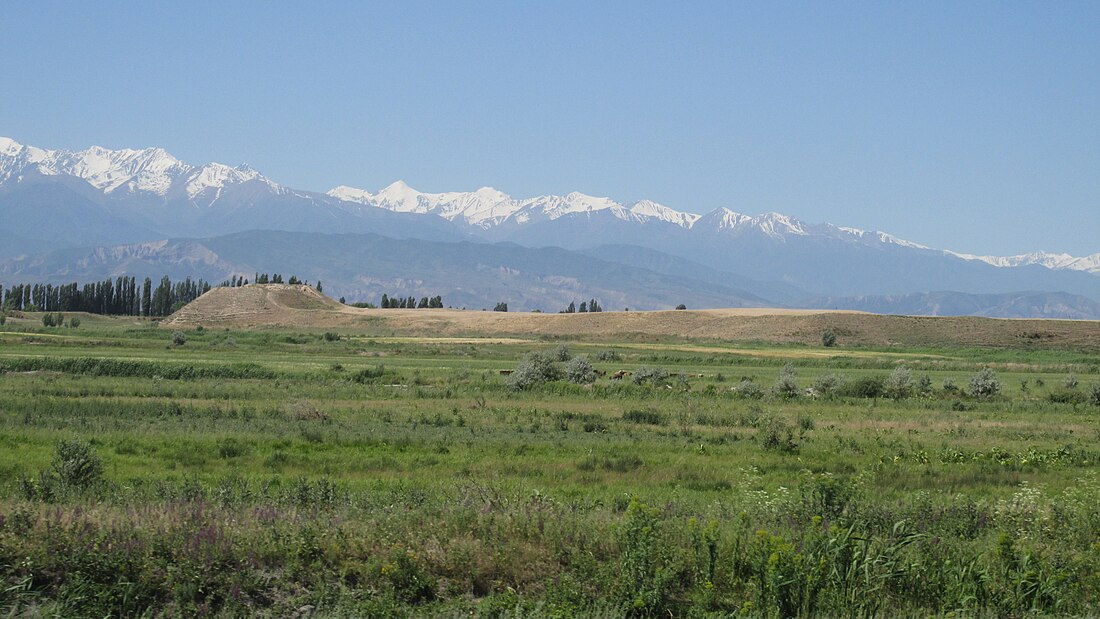Navekat
Ancient Silk Road city From Wikipedia, the free encyclopedia
Navekat or Nevkat [1] was an ancient Silk Road city that flourished between the 6th and 12th centuries. It lies near the modern village of Krasnaya Rechka, in the Chüy Valley, present-day Kyrgyzstan, about 30 kilometers east of Bishkek. It was one of the most important trading centres of the region.[2] Navekat was inscribed on the UNESCO World Heritage List in 2014[3] as a part of the site "Silk Roads: the Routes Network of Chang'an-Tianshan Corridor".
This article needs additional citations for verification. (May 2018) |
 Ruins of Navekat | |
| Alternative name | Nevkat |
|---|---|
| Location | Chüy Region, Kyrgyzstan |
| Coordinates | 42°54′56.2″N 75°0′29.9″E |
| Type | Settlement |
| History | |
| Founded | 5-6th century |
| Abandoned | 12th century |
| Site notes | |
| Condition | In ruins |
Archaeological site
Navekat had two walls: the first around the Shahristan, the traditional administrative center of this type of city; the second wall was more than 18 kilometres (11 mi) long, with public buildings, markets, gardens and even farms inside. There was a citadel (Persian: كهندز, romanized: kuhandiz) in the northeastern part of the city built on a massive earthen platform. The volume of this platform was about 13 million cubic meters, probably the largest man-made mound in the world.
During archaeological excavations, artifacts uncovered included a golden burial mask and an 8-meter-long reclining Buddha statue in one of the two Buddhist temples.[4] other artifacts demonstrate the presence of Buddhists, Zoroastrians, Eastern Christians, and Manicheans.
See also
References
Wikiwand - on
Seamless Wikipedia browsing. On steroids.


